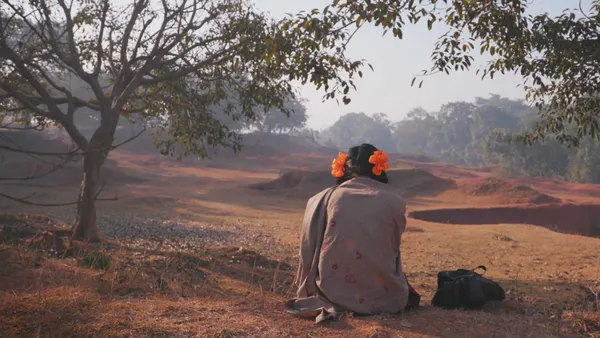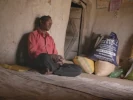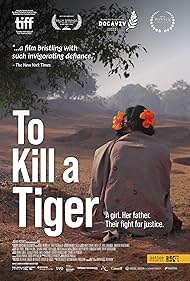Eye For Film >> Movies >> To Kill A Tiger (2022) Film Review
To Kill A Tiger
Reviewed by: Jennie Kermode

In 2022 31,000 rapes of women or girls were reported in India, but this number represents only the cases properly recorded at police stations. In a country where a quarter of the population is illiterate and most disputes are handled by the nyaya panchayat, or village justice systems, even when the law says that they should be referred to the state system, experts believe that the real figure is closer to 104,000. The problem is intensified by the lingering, widespread belief that the targets of these crimes are themselves partially responsible for their occurrence. In this climate, getting real justice can feel impossible. Oscar-nominated documentary To Kill A Tiger follows one family which was willing to fight against the odds.
Kiran (not her real name) was thirteen when she was attacked by three teenage boys at a family wedding, dragged down to the river and gang raped, then beaten and told that she would be killed if she told anyone. She went straight home, collapsing on the road close to her house, but not before her father had spotted her. After getting inside and having some water, she told him everything.

There are a lot of heroes in this film – mounting a prosecution in such circumstances is a group effort – but the two who really stand out are Kiran and her father, Ranjit. He would be an extraordinary man in any circumstances – one who, despite living in a country with such a strong preference for sons that an estimated 4.5 million girls per decade fall prey to sex-selective abortion or infanticide – always longed for a girl, and doted on her when she was born. He stood by her from the first moment that she spoke about the rape, and reported it the following morning – but that was only the first step in a months-long battle for justice that would test even his steely resolve.
Nisha Pahuja’s film follows his journey, and Kiran’s slow recovery, in an intimate and reflexive way, taking in the family’s experience, the attitudes of villagers including the accused boys’ families, the choices made by the village head man, the interventions of human rights workers, and much more. In doing so, it gradually reveals aspects of the wider context which makes progress so difficult, teasing out the inter-relationships between structural barriers and societal prejudice.
Importantly it does this in a way that challenges common assumptions made by outsiders about how change could be affected. The head man’s insistence on the need to prioritise the community over individuals is given additional weight by the failure of Ranjit’s rice harvest. He also asks the difficult question of how he is supposed to protect Kiran and her family if her assailants go to prison only to return to the village in five or seven years’ time.
With so much to cover, the film sometimes seems overly hasty. A reference to Kiran’s internal injuries – whilst one can absolutely understand why it shouldn’t be explored in more detail – could do with additional context, because most people don’t realise how common this is, affecting one in every four rape victims worldwide. Elsewhere, however, it finds time to return to particular points repeatedly, making sure that viewers won’t forget them. Numerous people ask Ranjit why he won’t just solve the problem, as they perceive it, by marrying his daughter to one of the rapists. He and his wife can’t get their heads around this way of thinking – and that, in itself, communicates something fascinating about social change within India.
There is a lot of talk about shame. Outsiders keep telling the family that they have nothing to be ashamed of, but it’s hard for them to choose to feel proud and sure of themselves when they are treated as troublemakers or directly mocked over what happened. Ranjit, like any parent in that situation, is tormented by thoughts of what he might have done differently to protect Kiran, although rationally it’s hard to pinpoint any such thing, allowing that he didn’t want to keep her locked away all the time. His distress is worsened by fellow villagers telling him that he has failed in his duty as a father.
The film is full of careful observations, from the looks on the faces of the villagers to the small things Kiran does as she reclaims her place in the world, the bunched ribbons which she wears in her hair like flowers gradually regaining their bright colours. It’s always difficult to control sound in a documentary and Daniel Samaan’s work in this area is deserving of the highest praise, doing a great deal to set the tone. This is, of course, grim subject matter, but the film is powered throughout by the tremendous love within the family, and in its own way this is as important as the outcome of the prosecution. If somebody can grow up like Ranjit despite having so little, and go on to raise children as amazing as Kiran and her siblings, then there is every reason to hope for a better future for everyone.
Reviewed on: 10 Mar 2024
















